
Where We Be
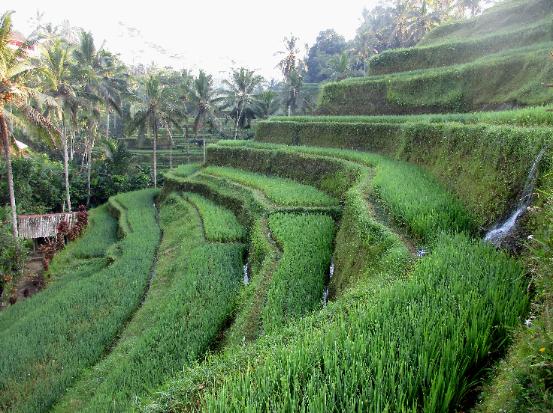
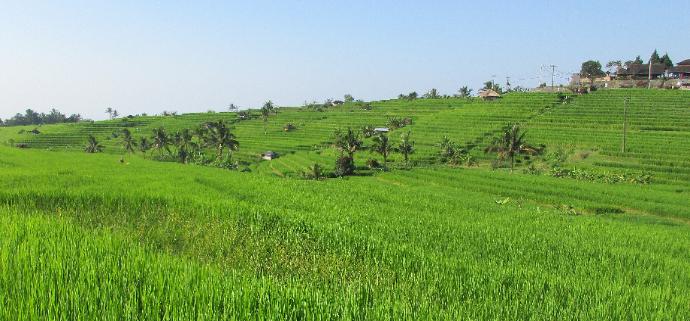
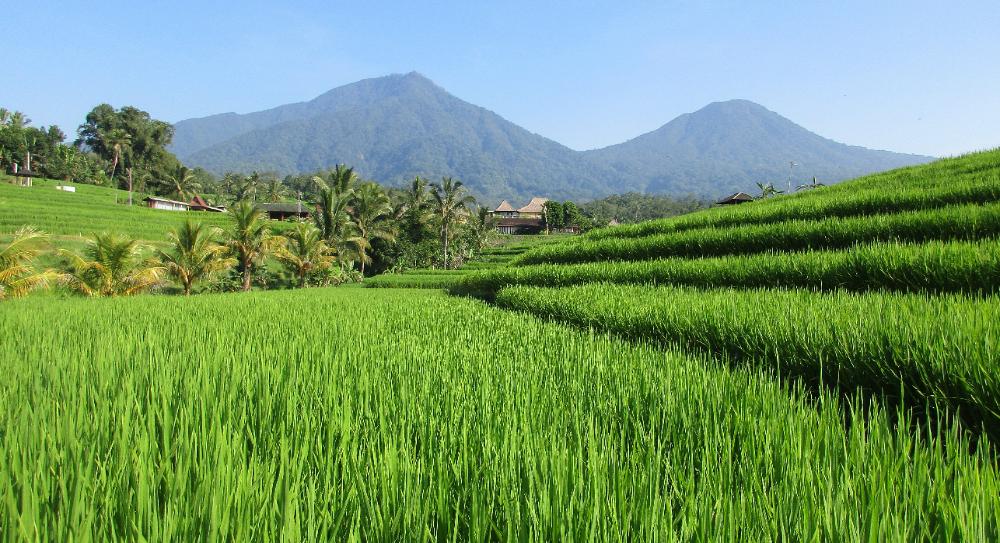

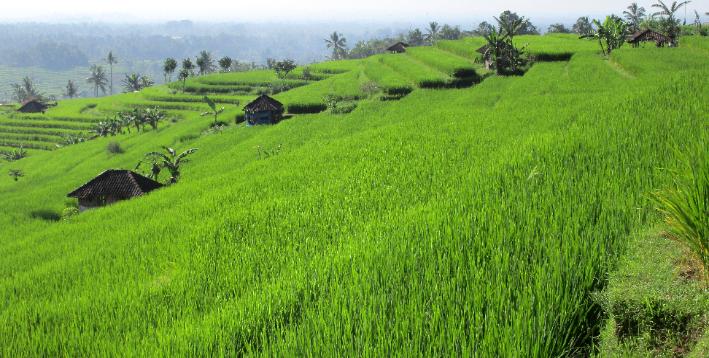
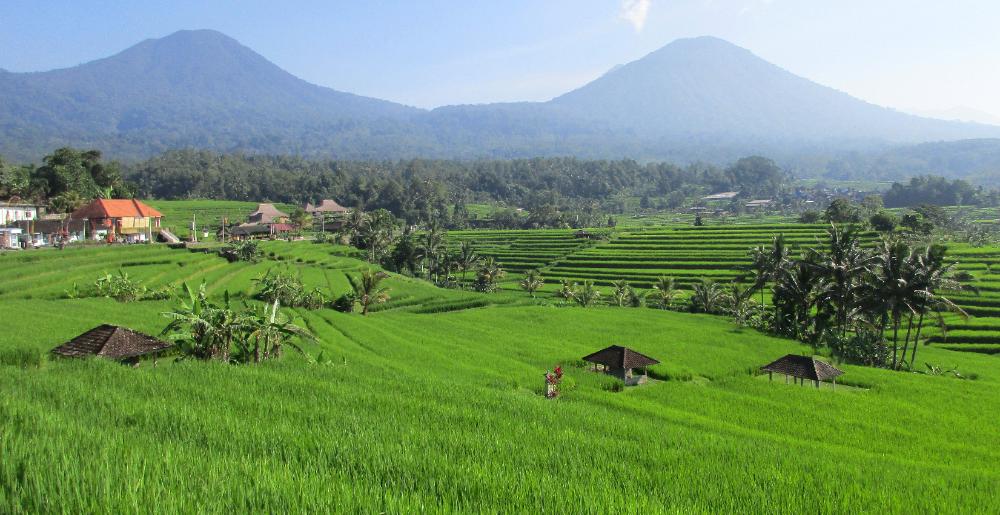
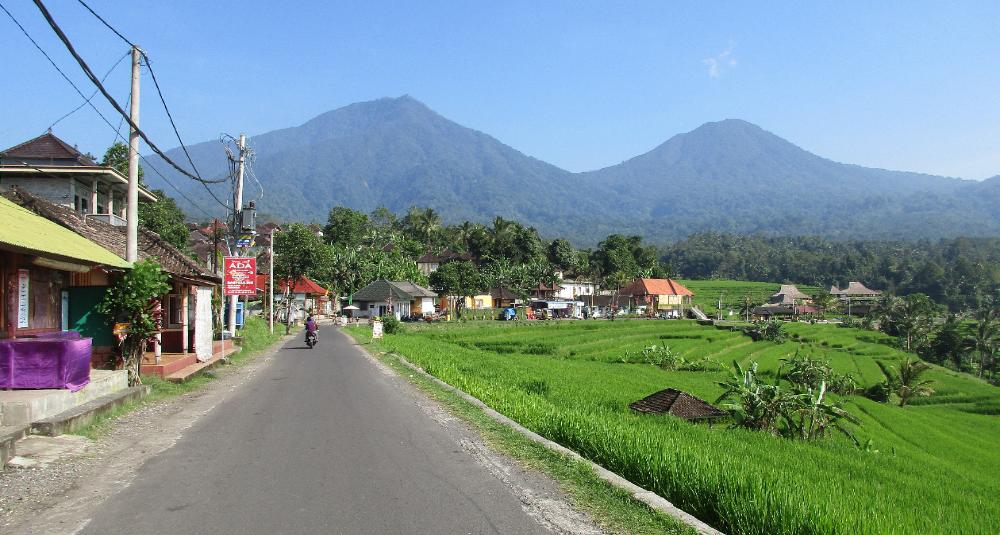
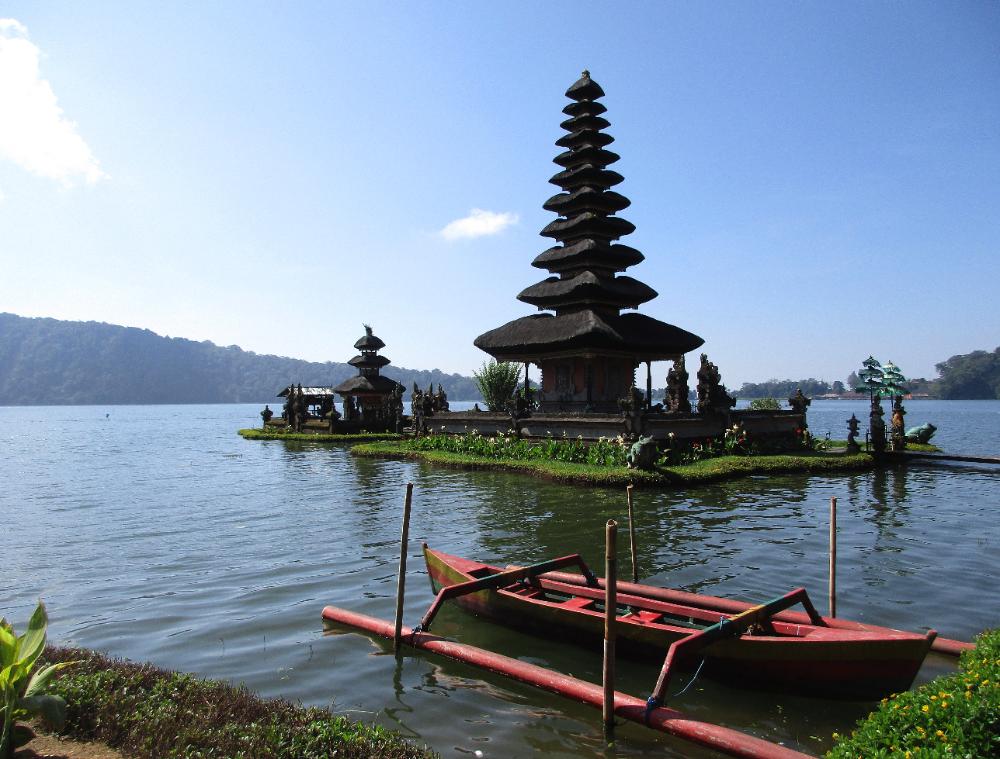
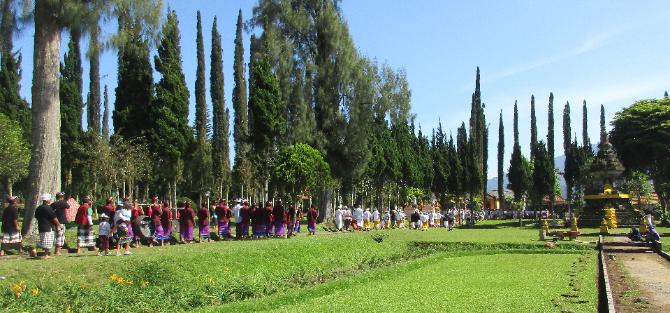
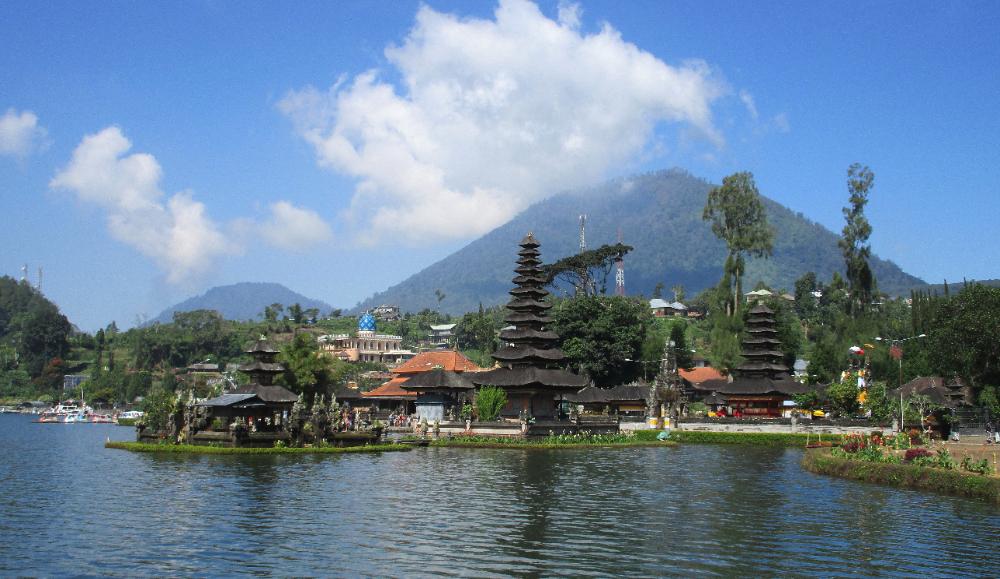
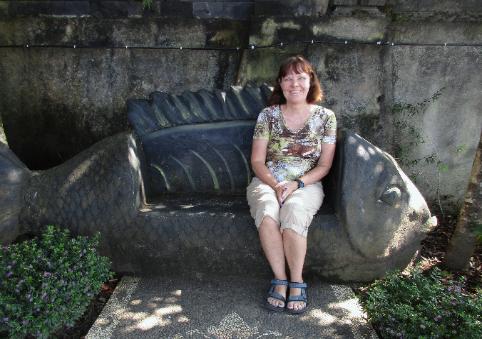

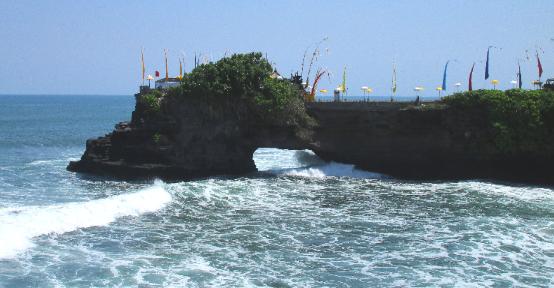
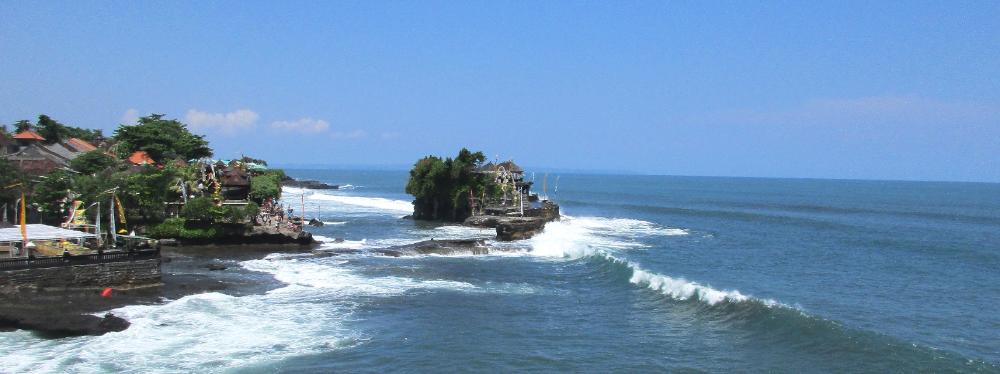
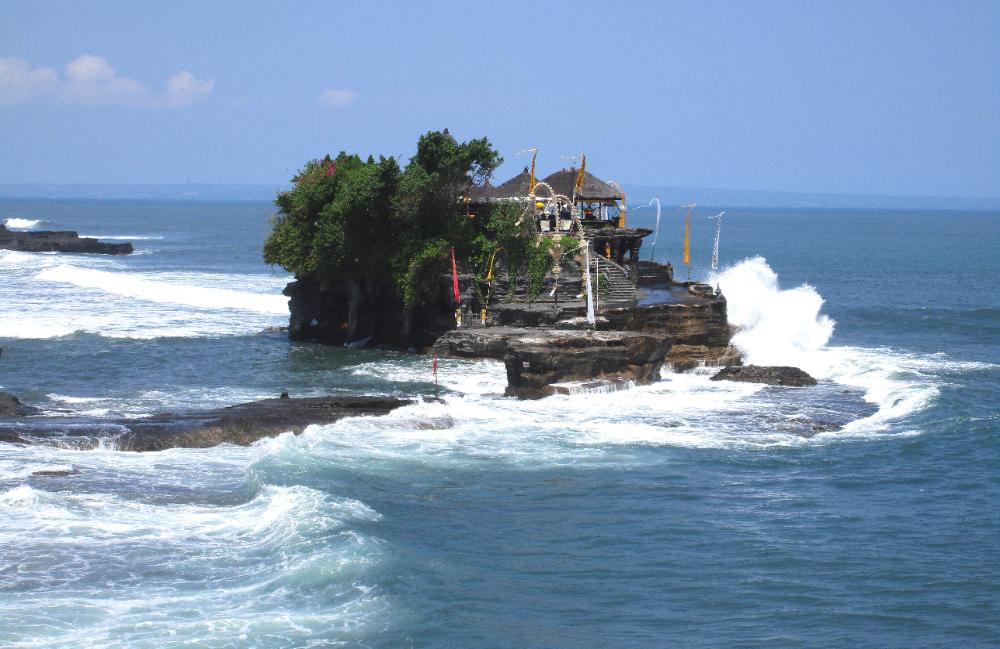
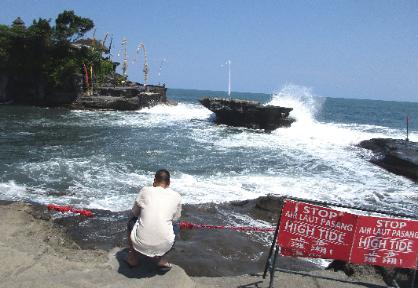
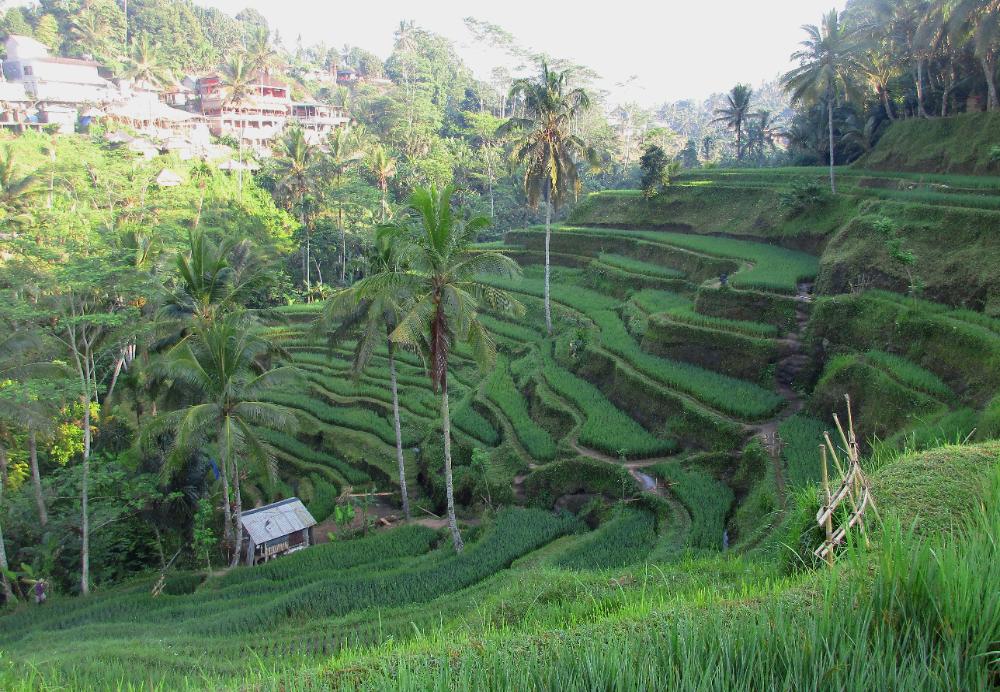
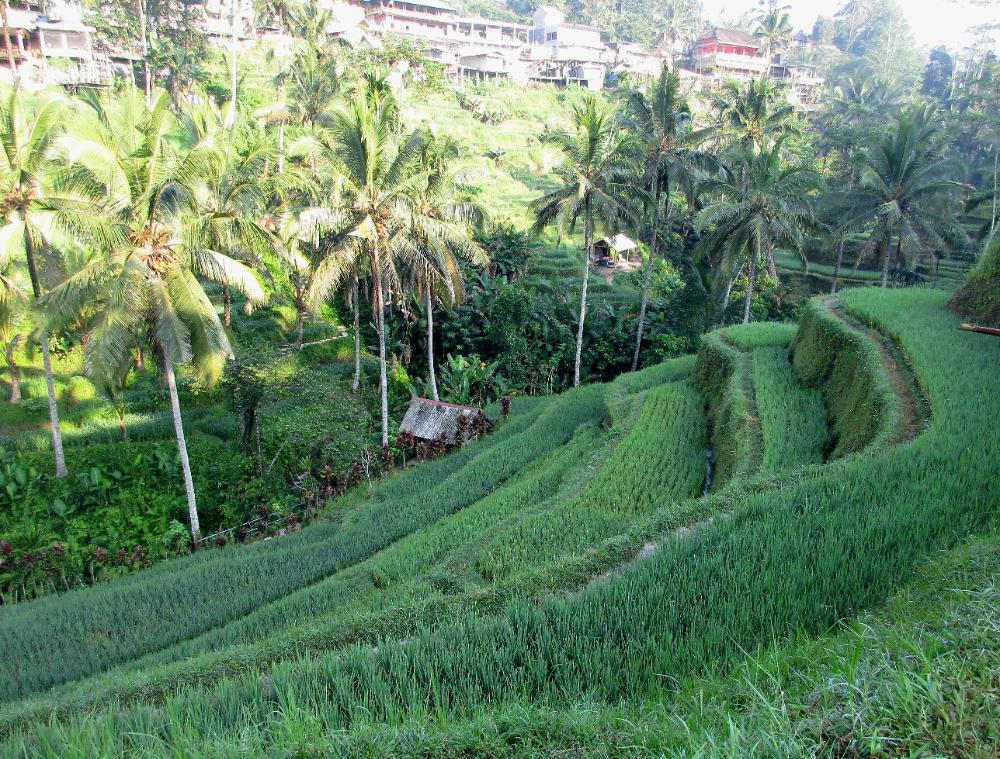
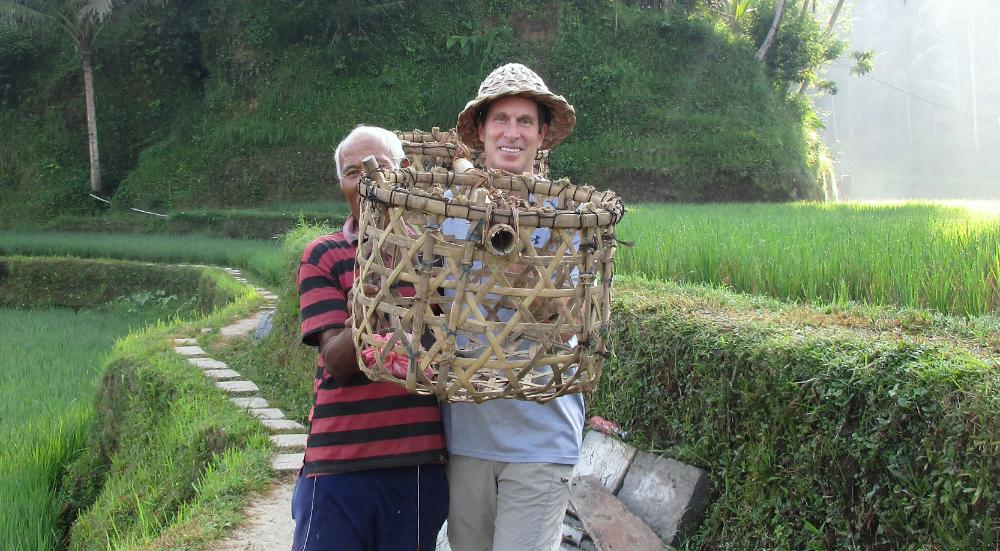
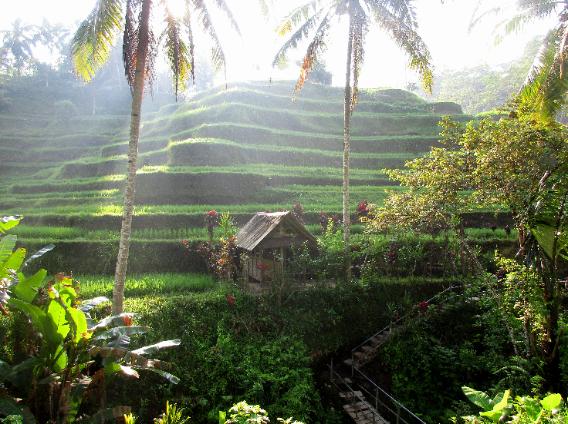
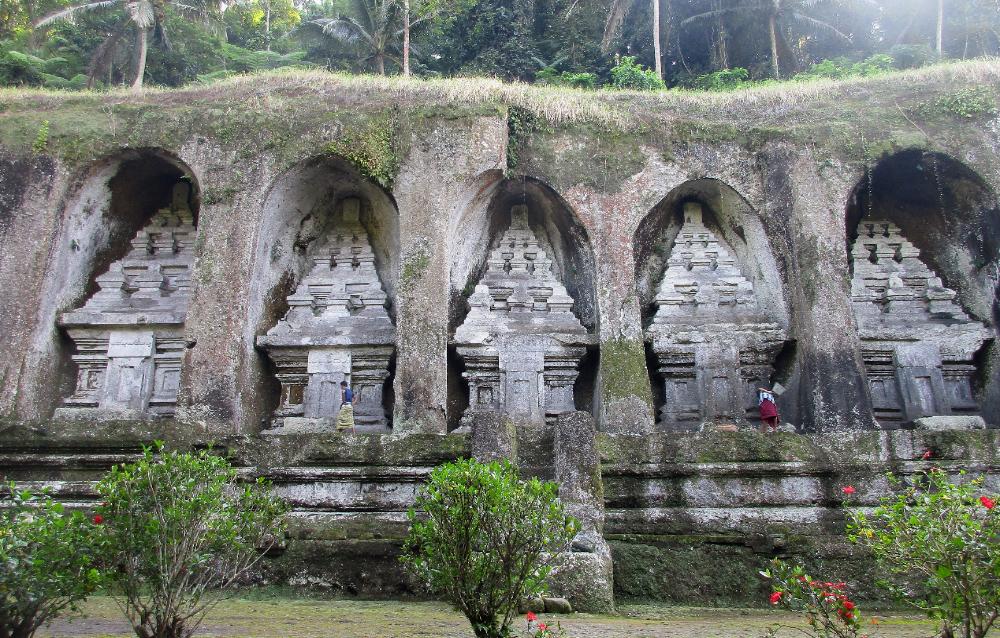
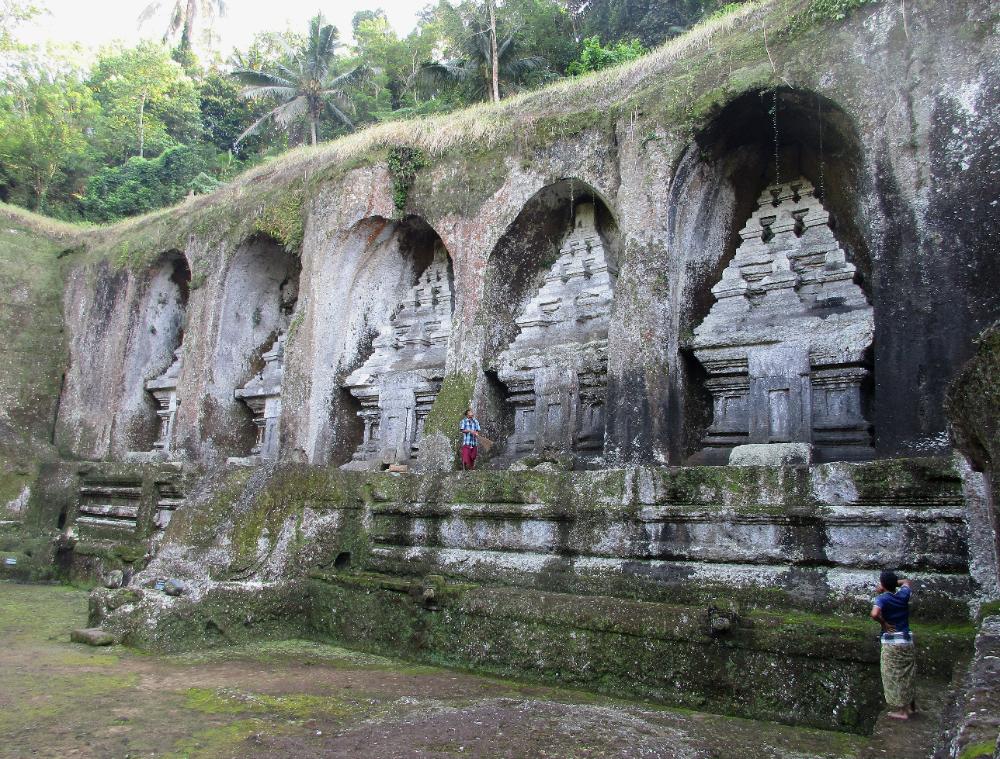
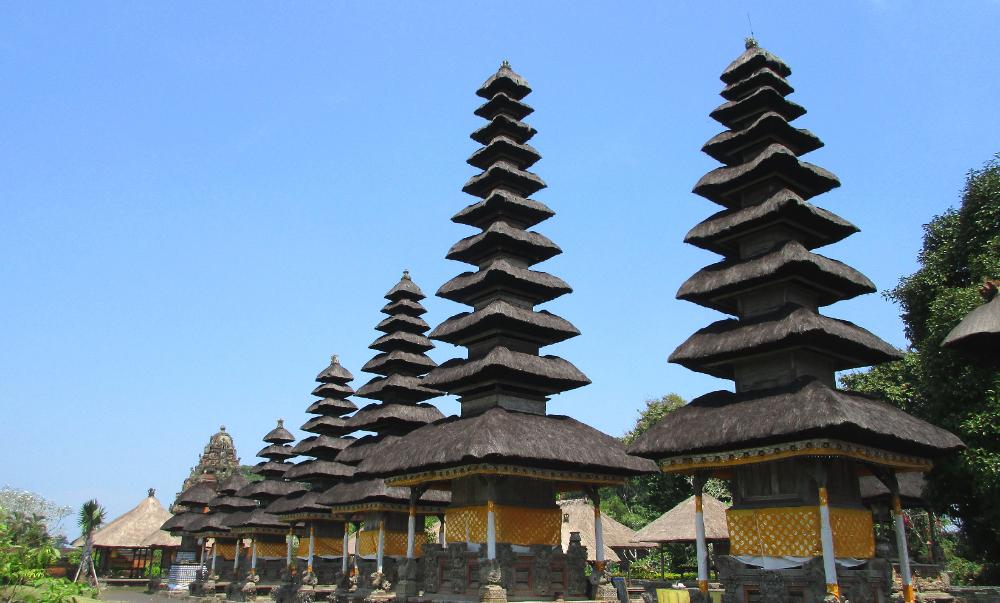
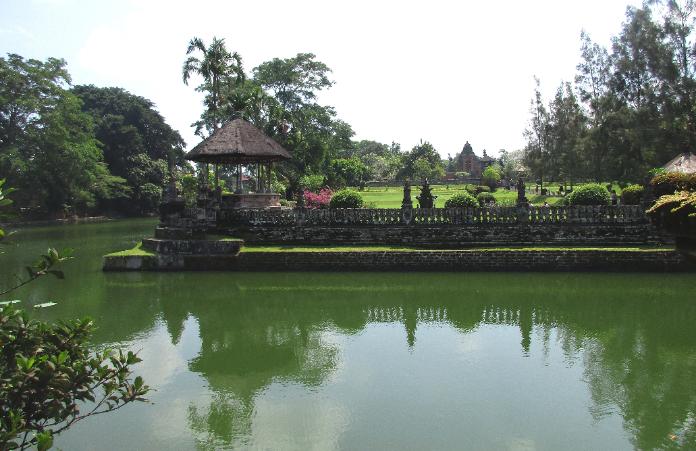
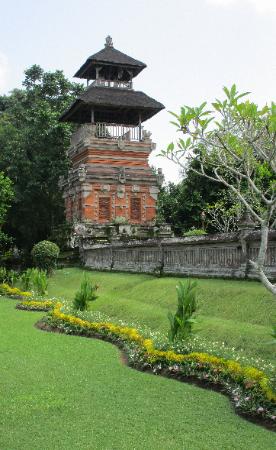
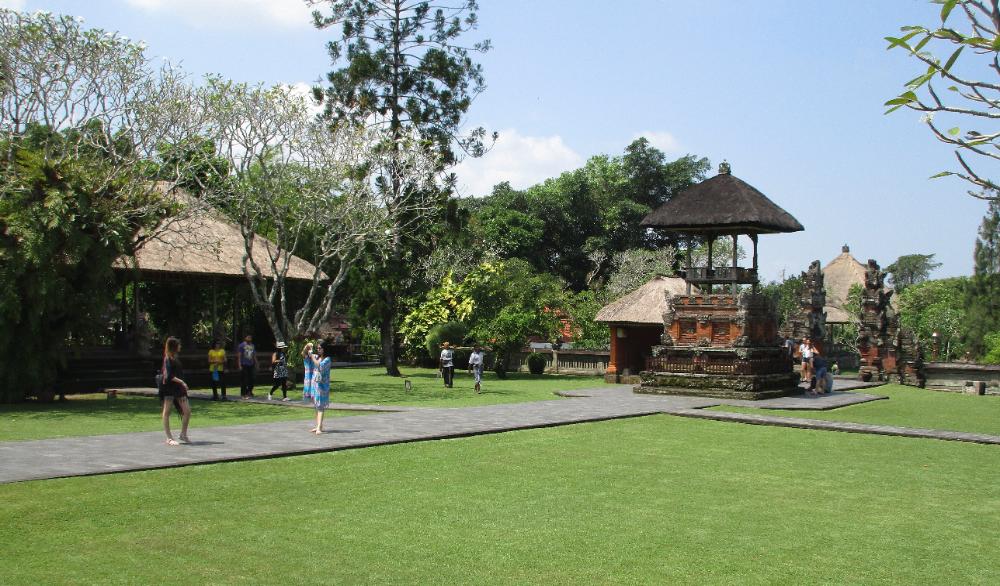
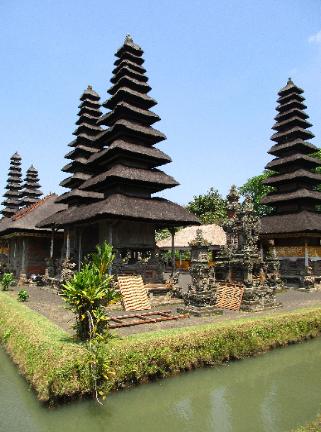
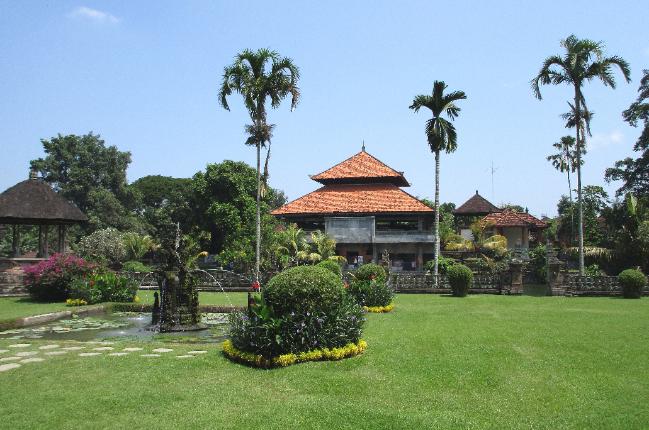
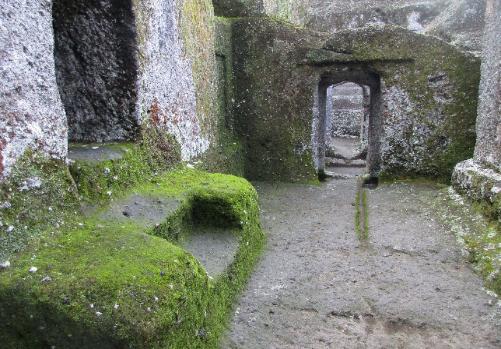
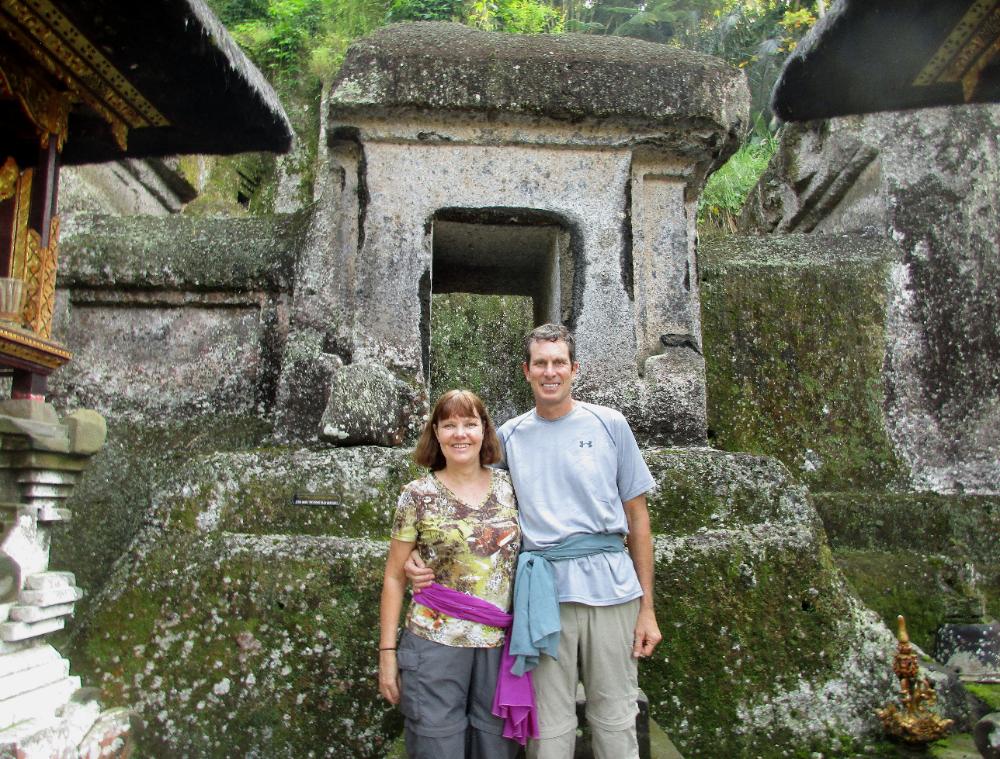
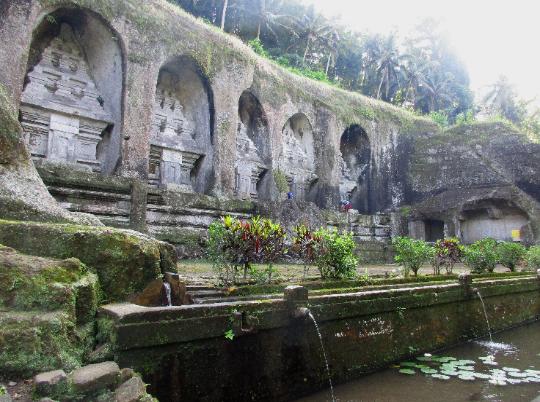
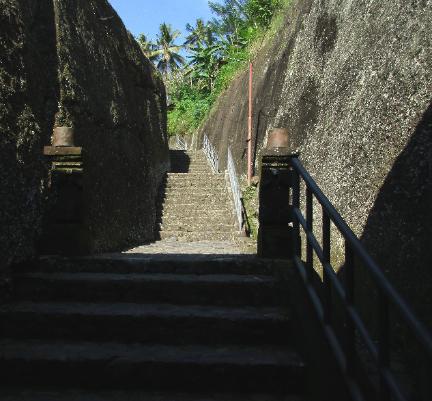
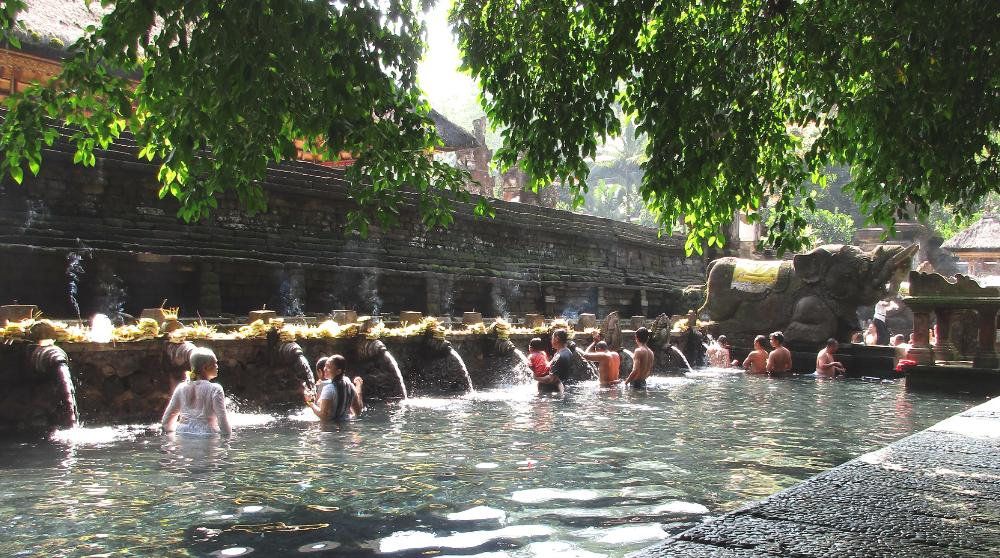
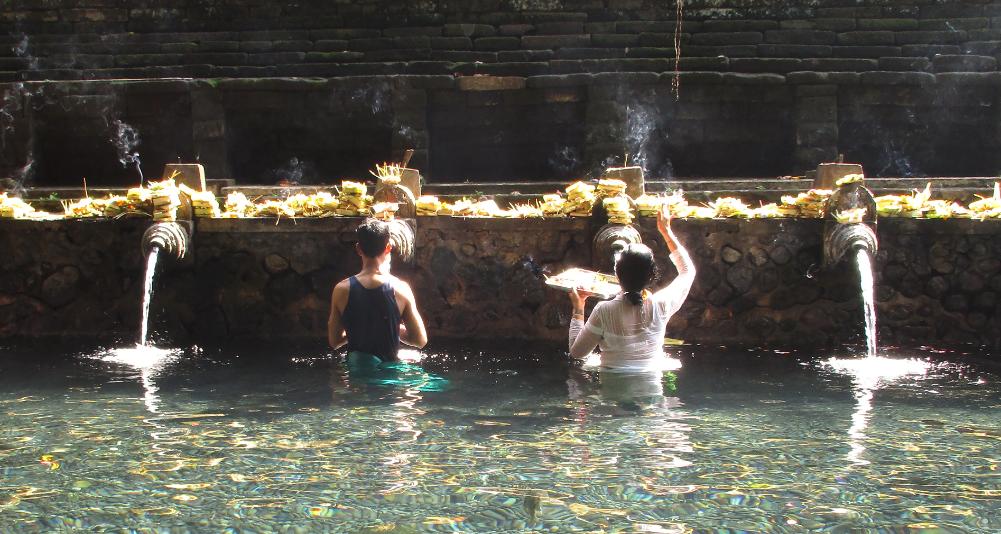
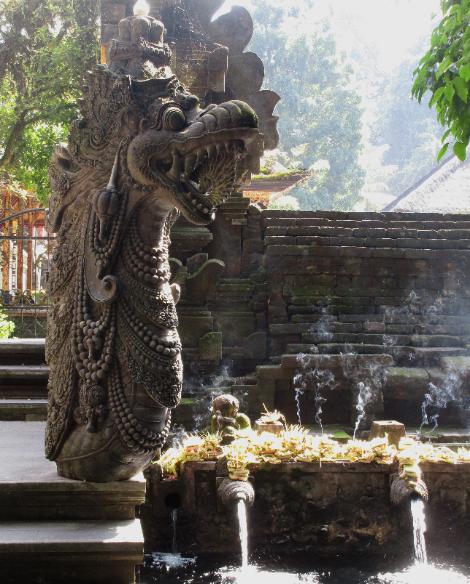
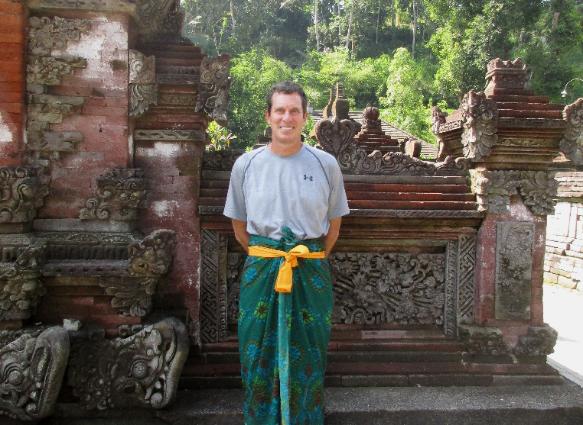
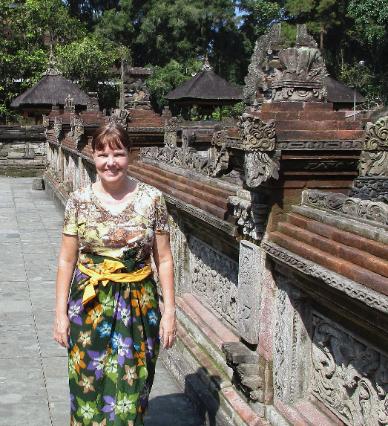
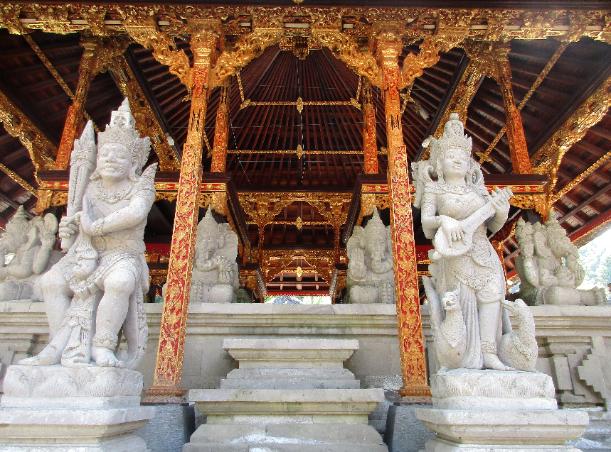
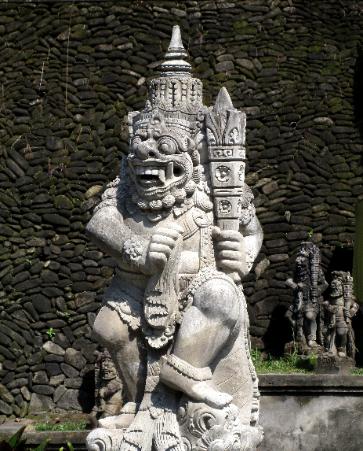
| Jatiluwih Green Land is a huge swath of terraced rice paddies -- they're the best you can visit in Bali both for scenery and serenity |
| Ubud Day Trips -- Bali, Indonesia |
From Ubud we hired a driver (~$35 per day) and
explored the nearby sights on the island over
two separate days. Definitely one of the high-
lights of our first day was Jatiluwih Green Land
with its amazing rice terraces (left). From there
we headed north to Ulun Danu Temple on lovely
Lake Bratan. We finished up at Tanah Lot, which
turned out to be our favorite Bali temple.
Located on an islet just offshore, it's pounded
by ocean waves -- the ultimate dramatic setting.
We're suckers for rice terraces so on our next
day trip we visited the ultra-steep terraces at
Tegalalang just north of Ubud. At Gunung Kawi,
which feels different from most other temples
in Bali, we hiked steeply downhill to reach an
ancient temple carved into the rocks. Next up
was Pura Tirta Empul, also known as the Water
Temple. It's considered a holy site by Hindus.
We wrapped things up at Taman Ayun Temple
with its numerous tiered pagodas. All told we
saw two rice terraces and five temples in two
days. There's just so much to see and do in Bali!
explored the nearby sights on the island over
two separate days. Definitely one of the high-
lights of our first day was Jatiluwih Green Land
with its amazing rice terraces (left). From there
we headed north to Ulun Danu Temple on lovely
Lake Bratan. We finished up at Tanah Lot, which
turned out to be our favorite Bali temple.
Located on an islet just offshore, it's pounded
by ocean waves -- the ultimate dramatic setting.
We're suckers for rice terraces so on our next
day trip we visited the ultra-steep terraces at
Tegalalang just north of Ubud. At Gunung Kawi,
which feels different from most other temples
in Bali, we hiked steeply downhill to reach an
ancient temple carved into the rocks. Next up
was Pura Tirta Empul, also known as the Water
Temple. It's considered a holy site by Hindus.
We wrapped things up at Taman Ayun Temple
with its numerous tiered pagodas. All told we
saw two rice terraces and five temples in two
days. There's just so much to see and do in Bali!
| We almost skipped Tanah Lot -- and what a mistake that would have been! The temple's setting is spectacular, set atop an island just off the coast amidst roiling seas. We happened to visit during high tide so it was even more dramatic. |
| Posted signs warn you of the obvious -- there's no getting there at the moment |
| Tanah Lot is easily visited both from Ubud and from Bali beaches near Denpasar, which helps explain its popularity. It's the most visited temple in Bali. The cost is Rp 65,000 each (~$5 US). |
| Next up was Pura Tirta Empul, only about 1 km away from Gunung Kawi. This is sometimes called the 'water temple" because it’s a source of holy spring water for Hindus on the island. |
| Hindus bathe in its holy water, moving from fountain to fountain for ritual purification. Non-Hindus are also welcome to bathe, so bring a swimsuit if you'd like to try it. |
| Smoking incense and rushing water make for a visually pleasing combo next to this dragon statue |
| Once again we were requested to wear saris around our waists. Cost to enter is only Rp 15,000 pp (~$1). |
| We enjoyed the atmosphere of this temple with its shrines and statues galore. But you'll have to pass through a long maze of souvenir shops to get out -- I wasn't sure we'd ever escape! |
| The temple was founded around the water spring in 962 A.D. Besides the central bathing area there are also gardens, temple pavilions, and a fish pond where we fed numerous hungry carp. |
| Jatiluwih Green Lands |
| Ulun Danu Temple |
| Taman Ayun Temple |
| Tanah Lot Temple |
| Tegalalang Rice Terraces |
| Gunung Kawi Temple |
| Pura Tirta Empul |
| At low tide you can walk along a sandbar to the temple -- but as you can see, at high tide it's definitely not reachable! |
| Tegalalang is only about twenty minutes from Ubud, which adds to its popularity. We arrived early in the morning before all the crowds. |
| Beautiful! Across the way you can see the village from which you hike down at the start. |
| These terraces are more commercial than Jatliuwih. Locals collect "donations" of Rp 2,000 or 5,000 (just 25 or 35 cents) as you cross their plots of land, sometimes with a photo op thrown in. Carry a few small bills with you when you come. |
| Most people would be satisfied with just one rice terrace outing but not us! Tegalalang is smaller but more vertical and steeply terraced than Jatiluwih. |
| If you just want a quick photo from near the road (as above), you might want to come in the late afternoon instead of the morning so the light is behind you. |
| Before you enter you'll see this body of water that mostly surrounds the temple complex. You can only enter via a bridge leading to a richly ornamented gate. |
| Taman Ayun is really a temple garden with its manicured landscaping. It's one of Bali’s largest temple complexes and costs only Rp 20,000 pp (~$1.50) to enter. This picture was taken near the entrance. |
| But you can feel the age and mystery of this place. It’s considered a holy site for Hindus and has stood here since the 11th century. |
| Situated by the Pakerisan River, it’s scenically beautiful in its jungle setting. Perhaps one reason it's less visited is that it requires a steep climb down and back up again. |
| The five biggest shrines are shown here. Gunung Kawi is less visited than some other Balinese temples but we thought it highly worthwhile. Arriving early, we had the whole place to ourselves except for a few local workers. |
| Gunung Kawi is an ancient temple and funerary complex carved into the rocks at the base of a cliff. We loved getting to see this unusual site. |
| Since it's a holy site, we were asked to wear a sash around our waists even though we were already wearing long pants. The cost is only Rp 15,000 pp (~$1) to visit. |
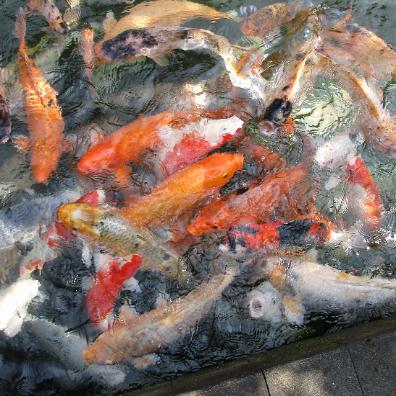
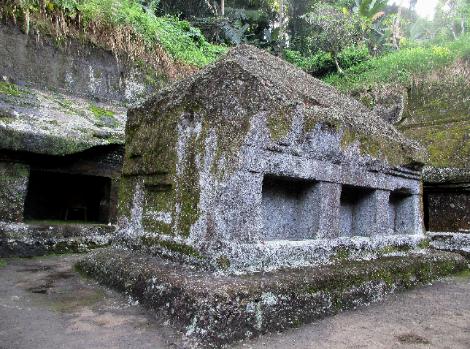
| You don't visit inside the main courtyard (at least not as a tourist) but simply admire it from outside the moat by following along a stone path. Beyond the moat are other shrines and landscaped gardens to enjoy. |
| Our last stop was a bonus -- Taman Ayun ("Beautiful Garden"). Built in 1634, it's located about half an hour away from Ubud. At its heart is this lovely series of multi-tiered shrines surrounded by a square moat. |
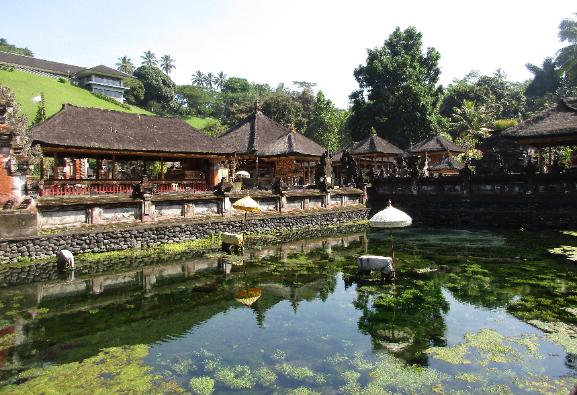
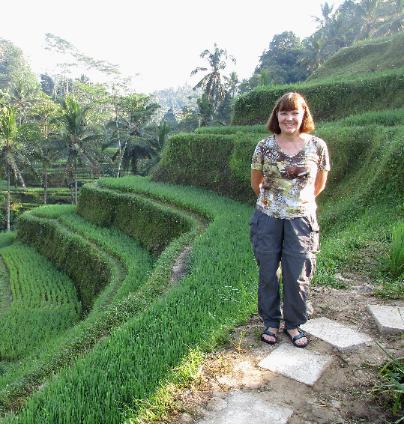
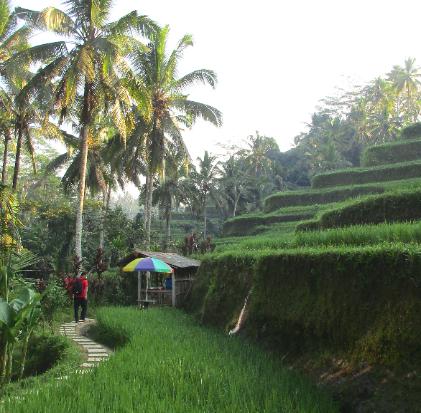
| It takes extra effort to get here -- a good 1½ hours of zigzagging across north- central Bali -- but it's worth it to be standing here in the morning on a sunny day |
| We saw no other tourists, only a few rice farmers working in the fields. April is a great month to visit as the rice plants are long and green. |
| As you climb higher, the views get even better, especially with the mountains framed behind. Getting to walk at our own pace through the rice fields was a real treat. |
| Eventually we climbed up to this picturesque village. Our dog companions traveled the whole way with us, and even our driver thought it was funny they'd come so far. |
| The festive decorations of the ten-day Galungan celebration were still in full force as we drove through small villages along the way |
| Even the entry sign is pretty. The cost is Rp 50,000 ($3.50 US) each. You don’t actually go inside the temple, you just admire it from the outside. |
| When we visited around 10 am, a procession of worshippers was playing music and solemnly making their way to the temple |
| We drove another half hour north to Ulun Danu Temple, a picturesque multi-tiered "floating temple" on Lake Bratan |
| While the temple views are best from the east, the morning lighting made it easier to get decent photos from the lake's western edge |
| No temple visit would be complete without a fish bench and ferocous bear photo op! |
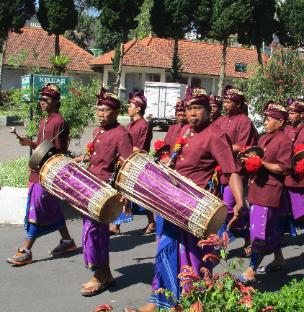
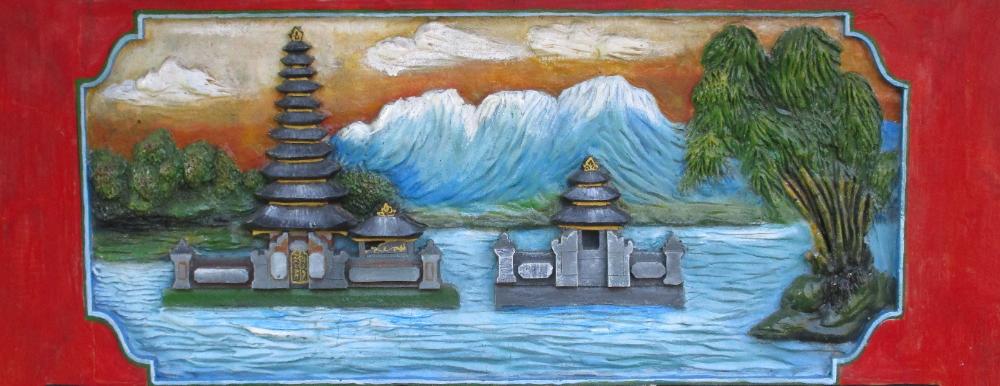
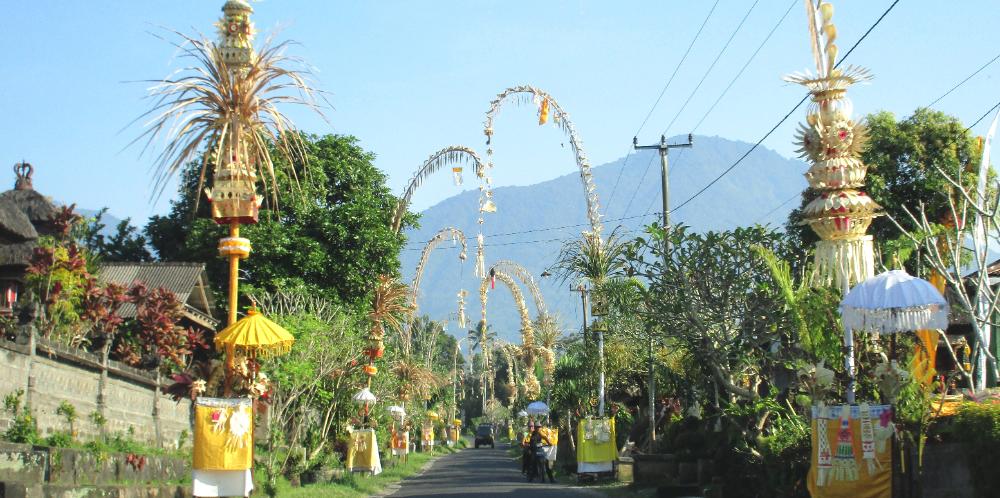
| Our driver told us to hop out and follow along a well-marked trail through the rice paddies. He pointed to a far-off building across the way where he said he’d meet us. |
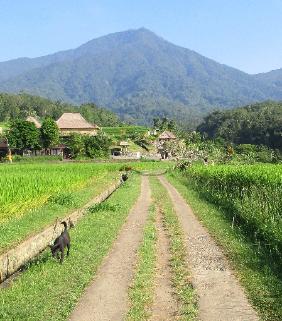
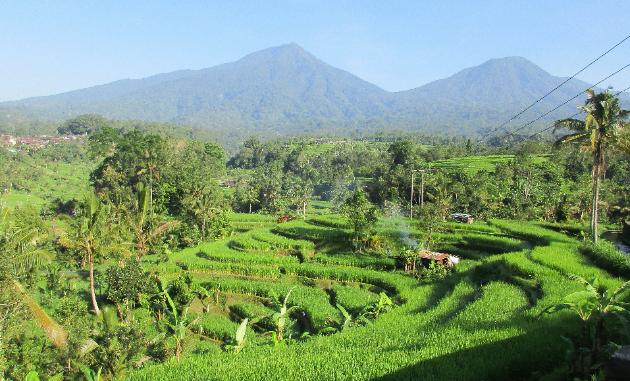
| It's not just the temple but the overall location that makes this place memorable. Nearby is a natural arch formed by the pounding waves. |
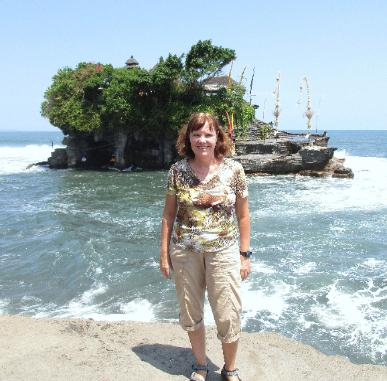

| Looking back at our starting point. Two local dogs kept us company, happy for a walk. |
| It's a steep walk down to this point, then you get to enjoy a short flat section before climbing up into the terraces |
| Both rice terraces are worth seeing. Jatiluwih combines well with Ulun Danu, Tegalalang with Gunung Kawi and Pura Tirta. |
| Welling up from below is a natural spring, the source of the holy water at Pura Tirta Empul |
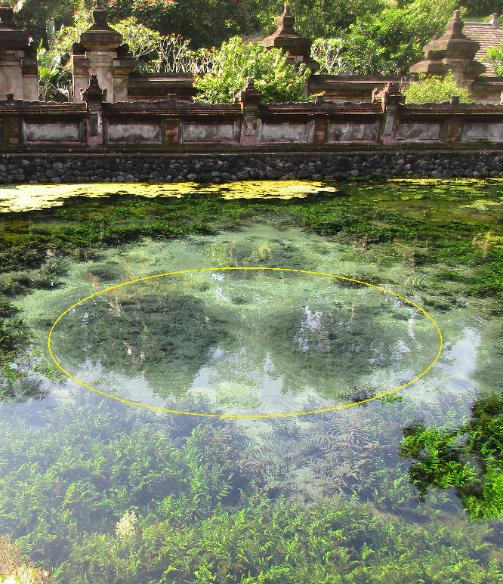
| Watchtowers punctuate the walls -- you can climb them for good views |